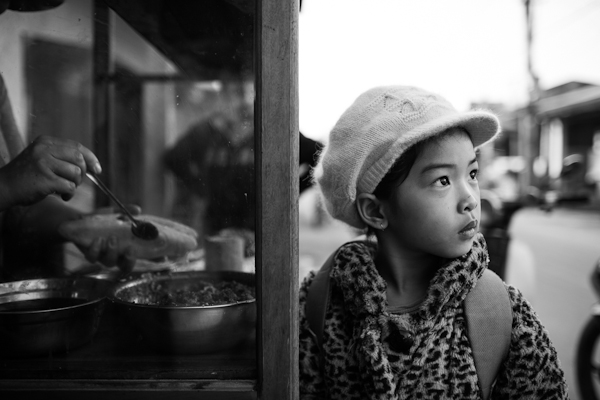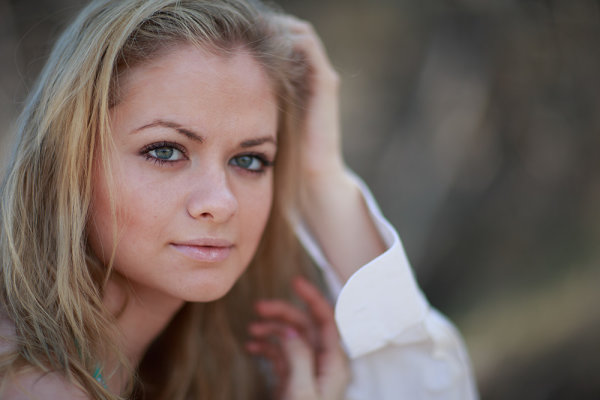 |
| Want to monitor audio while shooting video on the Fujifilm X-T4? You’ll need a dongle. |
Just a quick warning: I’m going to clobber Fujifilm a bit in this column. But not until I praise Fujifilm.
A few short years ago, Fujifilm was the last camera company I associated with great video. At a time when competitors’ cameras were capturing serviceable 1080p footage, Fujifilm’s models slotted in somewhere between the Fisher Price Elmo video camera and the iPhone 4 in terms of video quality.
A ‘worst to first’ story?
My, how times have changed.
Today, Fujifilm is a shining example of what’s possible when a traditional camera company decides to tackle the challenge of video. There’s no complacency here, and in recent years the company has not only caught up with, but surpassed, many of its competitors in key areas. Recent models deliver beautiful 4K video, 10-bit color and support the H.265 codec up to 400 Mbps. F-Log gamma provides post-processing flexibility, and the gorgeous Eterna film simulation delivers beautiful cinematic footage.
$ (document).ready(function() { ImageComparisonWidget({“containerId”:”reviewImageComparisonWidget-20799971″,”widgetId”:744,”initialStateId”:null}) })
With the X-T4, Fujifilm dials it up a few more notches. In-body image stabilization, separate menus for stills and video, F-Log view assist for visualizing a LUT in-camera, 240 fps recording, a dedicated Q-menu for video and much more show that Fujifilm is serious about appealing to video shooters.
That’s why its decision to omit a headphone jack from the X-T4 is simply mind boggling, especially considering that the X-T3 includes one. Here’s the problem: being serious about adding features that people want and recognizing how customers actually use your product are two different things.
Being serious about adding features that people want and recognizing how customers actually use your product are two different things
For all the great improvements – and they are great – the X-T4’s design overlooks one of the most basic principles a video shooter cares about in the field: a reliable workflow with as few points of failure as possible. Every time you introduce something like an adapter between connectors you increase the risk of something going wrong. Some things will always go wrong in the field, but there are certain key things that just can’t go wrong, and the ability to monitor audio is one of them.
I’ve been here before
I was an early adopter of mirrorless cameras for video work and embraced models like the Panasonic GH2. There was a LOT of room for improvement in that camera, but I found reasonable workarounds for most things.
However, it had a big Achilles heel, and it’s almost the same one as the X-T4: it used a non-standard 2.5mm microphone jack that was incompatible with the standard 3.5mm plug on most hot shoe microphones (like the Rode VideoMic series).
I ordered a couple adapters and threw them into my bag, but adapters and dongles have a habit of disappearing or failing without warning. As a result, I subsequently ran into several situations where I couldn’t connect a microphone due to a missing or, in at least one case, a defective adapter. Was it the end of the world? No, but it was very disruptive and frustrating, particularly since the camera included a jack – just a non-standard one.
 |
| Requiring an adapter to monitor audio on the X-T4 is reminiscent of Panasonic’s decision to use a non-standard 2.5mm microphone jack on the GH1 (above) and GH2 – something that wasn’t popular among videographers. |
When this happened, it didn’t matter how capable the GH2 was when it came to video quality. The fact that it introduced a point of failure to one of the most fundamental parts of my workflow did. Where will you be when you discover you’re missing the USB adapter for the X-T4? I don’t know, but the things I do know are 1) it’ll be precisely when you most need it, and 2) USB to 3.5mm adapters aren’t the easiest thing to replace quickly, unless you’re lucky enough to be close to a big box or electronics store.
If fairness to Fujifilm, there’s one way to get a headphone jack on the X-T4: you can use the battery grip. This may appeal to some people, but unless you need the grip it’s basically a really big dongle. The headphone jack should really be an integral part of the camera.
Why Fujifilm needs to get this right
Some may argue that the X-T4 isn’t a ‘real’ video camera, and therefore omitting a headphone jack isn’t a big deal. You’re right: it’s not a C200 or an FS7 or anything else in that class. It doesn’t have XLR inputs, SDI connectors or any number of other things. Also, one could fairly argue that the Fujifilm X-H1—a camera we praised for its video capabilities—had the same limitation, so why complain?
Because the basic definition of what a video camera is has evolved, particularly in the prosumer market; whether for size, budget or just familiarity, many creators—including enthusiasts exploring the world of video—are now using mirrorless cameras to produce content that would have required a pro video camera in the past.
 |
| Fujifilm, if you want to appeal to videographers please don’t introduce a potential point of failure to a critical part of the workflow. |
I’m convinced that Fujifilm is trying to appeal to these users, and it’s certainly getting their attention with a product like the X-T4. Not only can it shoot beautiful video, but it’s a pretty self-contained, stand-alone solution thanks to all the tech packed into it.
Which is why removing a feature that’s so critical to the video production workflow, and which was included on the camera’s predecessor, is simply baffling. It suggests that while Fujifilm has done an amazing job of adding features that videographers will love, it still doesn’t quite understand how they work.
Despite what I’ve written here, I’m really looking forward to using the Fujifilm X-T4 to shoot video. It’s an exciting camera and I already know I’m going to love it, but I’ll have several USB to 3.5mm adapters in my possession before I commit to using it for anything serious.
Articles: Digital Photography Review (dpreview.com)



































You must be logged in to post a comment.